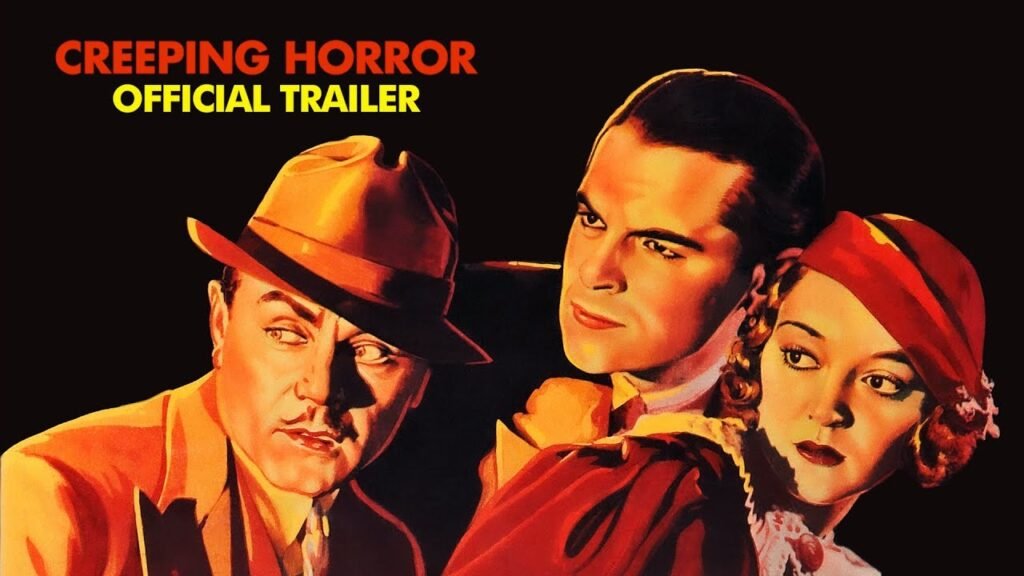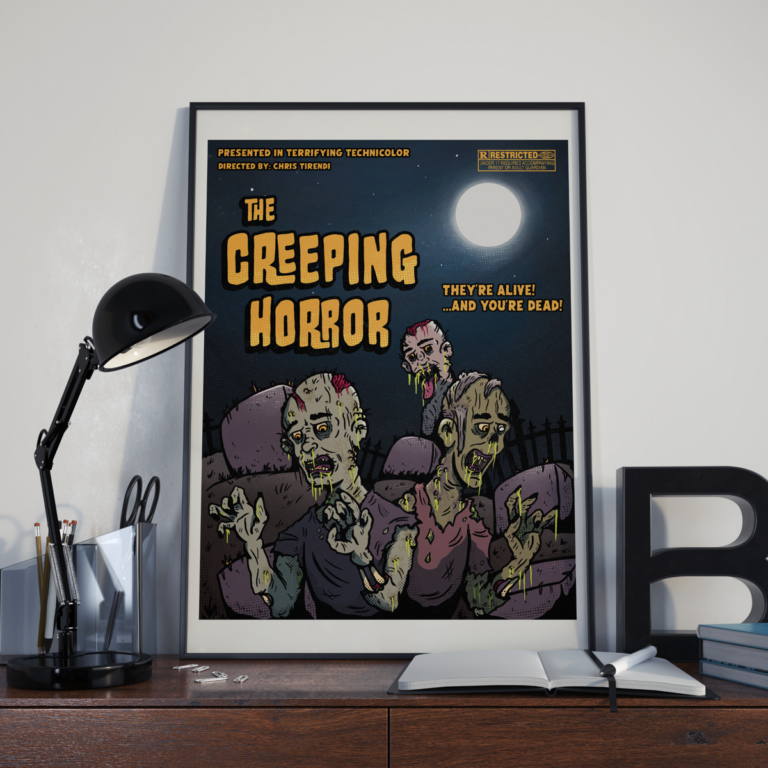Creeping horror is a genre that slowly builds dread, and from the moment you begin, it tugs at your senses. Whether you’re a budding writer or a devoted reader, understanding creeping horror helps you appreciate—and create—narratives that quietly terrify.
Creeping Horror Defined
Creeping horror introduces fear gradually, rather than with shocking scares. This method gives readers time to feel uneasy, and eventually, that discomfort evolves into terror. Furthermore, it relies on realistic settings and ordinary characters. Yet, with repeated small hints—like flickering lights or distant whispers—the tension mounts. Consequently, the horror creeps into every corner of the story. It feels like a slow drip of water, eroding your mind, and then nothing is the same.
Origins and Evolution of Creeping Horror
Looking back, creeping horror has deep roots in classic literature. Edgar Allan Poe’s subtle psychological unease set the tone. Meanwhile, later authors like Algernon Blackwood emphasized nature’s eerie silence. Over time, movies like The Shining and Alien adapted this style. In addition, modern novels like The Terror by Dan Simmons hinge on suspense. Therefore, the genre has evolved, but its essence remains: slowly building dread that lingers long after the story ends.
Key Elements of Creeping Horror
- Atmosphere
The setting itself becomes a character, often gloomy or decaying. By describing the wind’s whisper or the settling dust, authors lay the groundwork for dread. - Pacing
Instead of sudden shocks, creeping horror paces its scares slowly. Story unfolds methodically, allowing anxiety to build. - Subtlety
Details are small but meaningful. A door creaks, a silhouette passes, and suddenly normal becomes uncanny. - Character Discovery
Characters gradually realize something is wrong. They piece together clues, and the reader pieces them too. - Psychological Depth
Fear transfers from the external to the internal. As characters unravel, so do readers’ emotional states.
Creeping Horror vs. Other Horror Genres

Although all horror aims to scare, creeping horror is distinct. For example, slashers rely on sudden violence. Paranormal horror often presents obvious ghosts or demons. In contrast, creeping horror is like a slow-burning fuse. Readers may not realize the horror until it explodes. Because of this, the impact feels personal and profound, and dread lives in the quiet moments.
Crafting Creeping Horror — A Step‑by‑Step Approach
Creating convincing creeping horror requires planning and subtlety. Moreover, you must carefully layer tension while keeping language clear. To begin, here’s a simple framework:
Step 1 — Choose a Familiar Setting
Start with a place your audience recognizes: a home, school, or woods. Through familiarity, tension becomes unsettling.
Step 2 — Introduce Normalcy
At first, characters live everyday lives. Then, a small oddity surfaces—a missing object, a strange sound. Because it feels normal, readers trust that something isn’t quite right.
Step 3 — Build Unease Slowly
Add more weird occurrences. It might be a pattern—a clock that stops, a distant laugh. By repetition, you ratchet up fear. Readers sense a pattern before characters do.
Step 4 — Reveal the Threat Gradually
Share glimpses of the horror—footprints, scratches, reflections at the edge of sight. You hint without showing everything. In this way, imagination does the heavy lifting.
Step 5 — Break the Illusion
When tension peaks, let everything come together. Then, show the truth. The revelation packs power because readers have been on edge for so long.
Step 6 — Aftermath
Even after the climax, leave a tremor. The story doesn’t end with relief. Instead, you leave a question mark—what if it isn’t over? So readers walk away with lingering unease.
Writing Tips to Enhance Creeping Horror
- Use Sensory Details
Describe smells, textures, and sounds—like the metallic scent of old blood, the rustle of dry leaves, or the heaviness in the air. - Keep Sentences Clear
Your audience may include young teens, so write simply. Also, your goal is to let mood do the work, not complicated wording. - Employ Transition Words
Because you want things to flow, use words like “however,” “meanwhile,” and “in addition” frequently. They guide readers while maintaining tension. - Balance Active and Passive Voice
Keep passive voice under 10%. Instead of “The door was opened by her,” write “She opened the door slowly.” It places the action with the character. - Pace Variation
Alternate long descriptive passages with short sharp lines. This makes quiet moments feel calm—and then startling. - Foreshadow with Care
Save your clues for the right moments. Too early, and readers get bored. Too late, and they feel cheated. - Make the Ordinary Eerie
A kitchen can feel safe—or it can smell like bleach and hide sinister stains. Use everyday objects to build dread.
Example Outline of a Creeping Horror Story
Title: The Whispering Walls
Introduction (Chapter 1)
The main character, Anna, moves into an old house. At first, everything seems fine. However, she notices a faint hum at night, like walls are whispering. She ignores it and tries to sleep.
Rising Tension (Chapters 2–4)
Anna finds smudges of an unknown substance on the hallway floor. Meanwhile, the humming grows louder. She hears footsteps upstairs, but no one lives there. By chapter 4, she can’t ignore it.
Build-Up (Chapters 5–7)
She interviews neighbors and learns the previous owner disappeared. Meanwhile, Anna sleeps less. She dreams of scratching sounds just beyond her bed. Soon, the whispers form words.
Climax (Chapters 8–10)
Anna follows the whispering to the basement. She flips the light. There, she sees words scratched into the walls—urgent pleas. Then, the whispers surround her. The threat stands just beyond sight.
Aftermath (Chapter 11)
Anna escapes. Yet, whispering returns: not from walls, but from her phone. A final twist leaves readers questioning her reality.
Common Mistakes to Avoid
- Rushing the Horror:
Creeping horror needs time. If you hit the scare too fast, tension evaporates. - Over‑Explaining:
Let readers wonder. You don’t need to explain every detail—sometimes the unknown is more terrifying. - Flat Characters:
If readers don’t care about characters, fear won’t stick. Develop emotions, history, and vulnerability. - Ignoring Transitions:
Flow is key. Without words like “similarly,” “afterward,” or “consequently,” the text feels choppy.
Recommended Creeping Horror Works
Here are some classics and modern examples that master the approach:
- Literature:
The Haunting of Hill House by Shirley Jackson – psychological tension within a seemingly normal mansion.
House of Leaves by Mark Z. Danielewski – a labyrinthine house that defies logic, coated in eerie detail. - Film & TV:
The Others (2001) – uses atmosphere and suggestion instead of blatant scares.
The Babadook (2014) – explores grief and fear through a presence that creeps rather than explodes. - Audio/Podcast:
The Magnus Archives – uses a methodical, quiet voice in short horror stories that linger.
Each of these demonstrates how creeping horror doesn’t need monsters around every corner. Rather, the monster is how you feel hearing the creak in your house late at night.
Why Creeping Horror Resonates
Our minds are wired for story—and dread. Creeping horror taps into basic fears: isolation, the unknown, losing control. With realistic settings, your imagination fills in the blanks. Consequently, the horror becomes personal. Moreover, because it unfolds slowly, it creeps into your thoughts days after you read it. It’s the reason you glance over your shoulder when no one is there.
Creeping Horror for Young Readers
Although some horror is too intense for kids, creeping horror can be age-appropriate when done thoughtfully. By focusing on moods and atmosphere, rather than gore, it teaches suspense and emotional nuance. For example, characters might explore a lost attic and feel uneasy, but not encounter explicit violence. Still, the feelings linger—and that’s part of growing as a reader.
Use Creeping Horror in Other Media
Whether you’re writing a script, designing a game, or directing a short film, the same rules apply:
- Visual cues: dim lighting, static shadows, slow camera movement.
- Sound design: dripping water, distant footsteps, low hums.
- Gameplay pacing: let players or viewers wander slowly, encouraging tension.
By integrating creeping horror across senses, you fully immerse your audience. Again, it’s not about the shock—it’s about what happens just before you jump.
Final Thoughts
Creeping horror holds a unique power: the power of anticipation. Because it creeps rather than attacks, it stays with us. You remember that creak in the night, that sense of hiding just beyond sight. As a writer, your job is to guide readers through that darkness—and to do so gently at first, so that the fall feels unstoppable.
If you want to master creeping horror, remember: start normal, build gradually, hint but don’t reveal, and create characters worth caring about. With these tools, your stories will haunt your readers—in the best possible way.
Read more: Curves Live: Exploring the World of BBW Cam Entertainment


